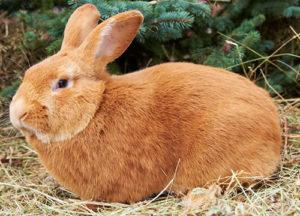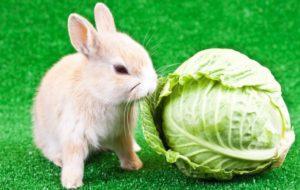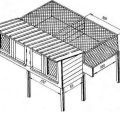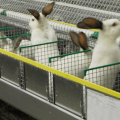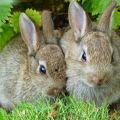Description of rabbits of the California breed and their maintenance at home
For connoisseurs of breeds, the Californian plump rabbit is at the top of the list of the best animals to breed. A permanent supplier of meat and fur, Californian does not require special care and vigilant attention. For animal lovers, the rabbit can become a family favorite. His meek, cheerful disposition and agility will make even a complete pessimist smile.
Content
- 1 History of the breed
- 2 Description and characteristics of the California rabbit
- 3 Main pros and cons
- 4 Maintenance and care rules
- 5 How to feed California rabbits?
- 6 Breeding
- 7 Diseases, their prevention and treatment
- 8 When to slaughter meat?
- 9 Breeding prospects
- 10 Where and how best to buy a California rabbit?
History of the breed
The first mentions of wonderful rabbits appeared in the 20s of the last century. The breed was founded by a talented American scientist, George Weston. The homeland of the breeder was sunny California, so no one was surprised by George's desire to name the breed after his native state. The path to success was long, breeding work was carried out for several years. The scientist was faced with a difficult task - to breed a special breed of rabbits capable of serving as a source of dietary meat and valuable fur.
Time after time, the scientist crossed representatives of the best breeds. The participants in the experiment were rabbits of the chinchilla giant, New Zealand white, and Russian ermine breed. George's efforts were crowned with success, and in the mid-20s the breed was released.
The eared beauties received official recognition in 1828. From that moment on, the Californian rabbits were considered a separate breed. However, the animal entered the territory of the Russian Federation only in the 70s of the last century.
The breed did not immediately gain popularity among Soviet specialists. It was believed that Californians are pampered animals, so breeding them in a harsh climate is difficult. Over time, farmers became convinced that animals adapt well to any living conditions. Today, it's hard to imagine farming without Californian pets.
Description and characteristics of the California rabbit
The tightly knit body of the rabbit resembles a straight top hat. The short neck and small head with erect ears give the pet a compact, neat appearance. Strong, thick paws securely support the plump body. The main part of the thick rabbit fur coat is white. Brown spots adorn only the area of the nose, paws and tail of the animal. In rare cases, there are individuals of blue, smoky color.

Beginners often confuse Californians with the butterfly breed. It is easy to resolve doubts: Californian beauties have red eyes, while a butterfly's eye color is dark. Little rabbits acquire spots gradually.Initially, the color of the baby's fur coat is close to a light blue shade.
Californians are perfect pets. A calm, docile disposition and unpretentiousness are the hallmarks of the American breed.
The animal develops evenly, its weight gain is calculated literally by months. If at the age of 1 month the rabbit weighs 0.9-1 kg, then after 30 days the mass of the animal increases to 1.8 kg. Adding 700-800 g every month, the pet gains 4-4.2 kg by the age of six months.
Although Californians are industrial animals, rabbits can be kept as pets. The playful character and friendly disposition of the handsome eared man invariably arouse the sympathy of people. But the habit of gnawing everything that is within reach is a big drawback of the animal.
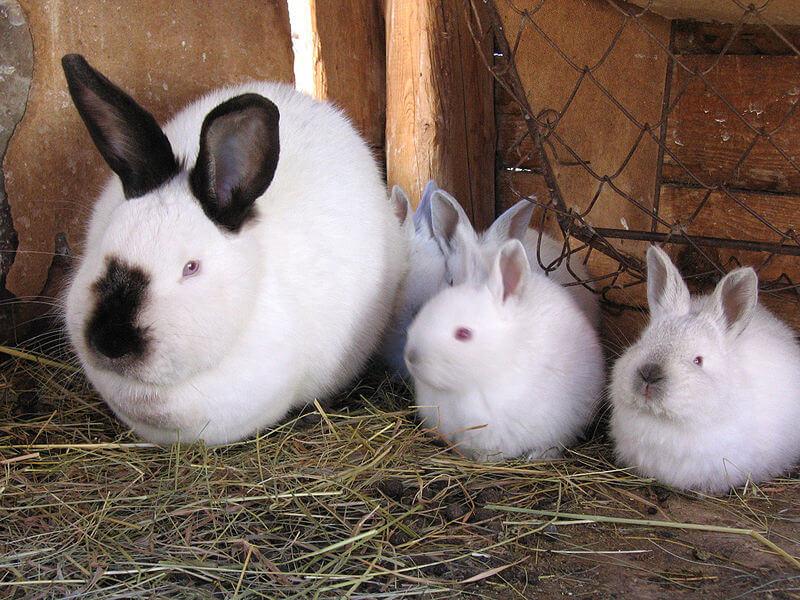
Main pros and cons
The legendary breed has many virtues, but even the Californian rabbits have their downsides. Positive qualities of animals:
- Short term to full maturation.
- High rate of weight gain.
- Californian females are very fertile and child-loving. These features allow the female to bring and feed more than 30 young rabbits per year.
- Genetic failure in animals is extremely rare.
The disadvantage of American rabbits can be called a special sensitivity to the feeding regime and the quality of the feed mixture.
Maintenance and care rules
Californians are famous for their ability to instantly adapt to any conditions of detention. However, in order to achieve a good result, you need to provide animals with a spacious home and a place for walking.

For mobile pets, they enclose an aviary in which they can warm up and take a walk. For this, a metal mesh is used. The size of the cells should not exceed 5 cm. Considering that rabbits are unsurpassed masters of digging, the mesh is buried 0.5 m into the ground. The open-air cage is covered with the same mesh from above. This will help protect animals from sudden attacks by predators.
The floor on the walking area is poured with cement. For 5 adults, the optimal enclosure area is at least 5 square meters. The minimum height of the arena is 1 m. The animals are scrupulously examined once a week. Healthy rabbits are combed out with a special brush. The tangles are neatly cut.
In cages
At home, pets live comfortably in a cage. A home for a handsome eared man is made of wood or mesh. The height of the rabbit suite should allow the pet to stand freely on its hind legs. For a comfortable existence of 5 adults, a cage with an area of 0.5 m is enough. The bottom must be covered with a thick layer of straw or sawdust.

A separate uterine house is built for females. In this corner, the rabbit will bear and raise numerous offspring. The cage is equipped with a feeder and a drinker. Pet dwellings are regularly decontaminated with a germicidal or blowtorch. In sunny weather, it is advisable to dry the cage in the air.
In the pits
Natural rabbits will love the way they raise their animals in a hole. This method is more often used for industrial growing of rabbits. For this, a large hole is dug, 2 * 2 * 1 m in size. Earthen walls are strengthened with slate. The floor is covered with the same netting or boards. The pit must be covered with a roof. In order to avoid the attack of predators, a fence is installed around the Californian home.
This type of maintenance saves the strength of the owners, in the pit the pets live almost independently. All people have to do is bring food and water to the rabbits. To prevent the outbreak of infectious diseases, the pits are periodically cleaned.

How to feed California rabbits?
The diet of animals should be varied and nutritious, because Californians quickly gain weight. Pets need:
- Cereals, legumes and oilseeds.
- Roots.
- Leaves and twigs of permitted plants (ash, maple, linden, fruit trees).
- Herbs (meadow, field, forest). In winter - hay, silage.
- Treats in the form of fruits and vegetables.
- Fish or meat meal.
- Vitamin supplements.
It is enough to feed adults 2-3 times a day, small rabbits need to be fed 5-6 times a day.
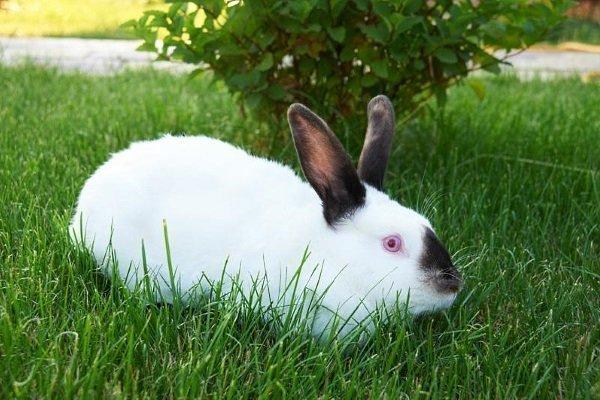
Breeding
For reproduction, animals of different breeding lines are selected. Rabbits must have breed characteristics, so not all individuals are suitable for breeding. Californians reach childbearing age as early as 5 months. From this moment, the female is ready for mating and can produce offspring 4-5 times during the year.
Pregnancy lasts about 30 days. Each time the rabbit gives birth to 8-10 rabbits. In order for the female to actively reproduce, you need to monitor the animal's diet. An obese rabbit is not suitable for breeding. For mating, the female is placed in a cage next to the male.
The first month of the rabbits feed on mother's milk, at the age of 3 weeks, the rabbits begin to give a small amount of food for adult animals. After the rabbits reach 45 days, the offspring from the mother are removed.
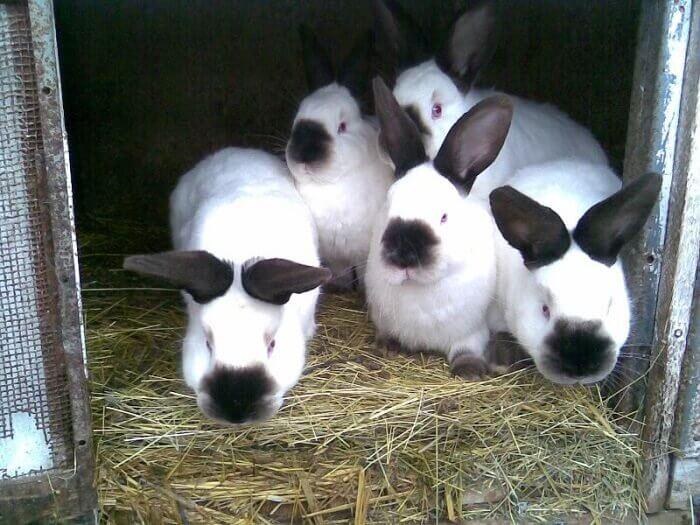
Diseases, their prevention and treatment
Eared pets are prone to viral hemorrhagic disease. The disease is accompanied by bleeding, diarrhea, palpitations and fever.
Animals refuse food and soon die. The disease is transmitted through contact with sick individuals. Unfortunately, the disease cannot be treated.
The death of the entire livestock is threatened by a disease called myxomatosis. Infection is indicated by drooping ears of the animal, swelling and rolling of hair around the eyes. The disease is carried by the ubiquitous insects. If the infection spreads, all animals are destroyed.
Diseases such as pasteuria and coccidiosis can be treated with antibiotics. Preventive measures will help to avoid tragic events:
- keeping the cell clean;
- timely vaccination;
- weekly routine check-up;
- quality food;
- regular disinfection of cages, feeders and drinkers.

When to slaughter meat?
The optimum age for slaughter is 6 months. By this time, the rabbit reaches a mass of 4.5-5.5 kg. After this age, keeping the animal becomes unprofitable, and the quality of the meat deteriorates.
Breeding prospects
The California rabbit is the perfect animal to grow your own business. The universal purpose of the breed allows you to get the maximum profit from breeding animals. For the initial stage, it is enough to acquire a herd of one male and 4-5 rabbits. The productivity of animals is not in doubt, because Californians quickly gain weight and reproduce easily.
Where and how best to buy a California rabbit?
It is better to buy rabbits in large farms specializing in breeding Californians. It is important to purchase animals from different breeding lines. Pets should not have closely related relationships with each other.
They choose rabbits in good condition, with pronounced breed characteristics. The well-being of the pet is evidenced by its fatness, shiny coat, clear eyes. A healthy rabbit actively shows interest in others, moves a lot and eats well.
